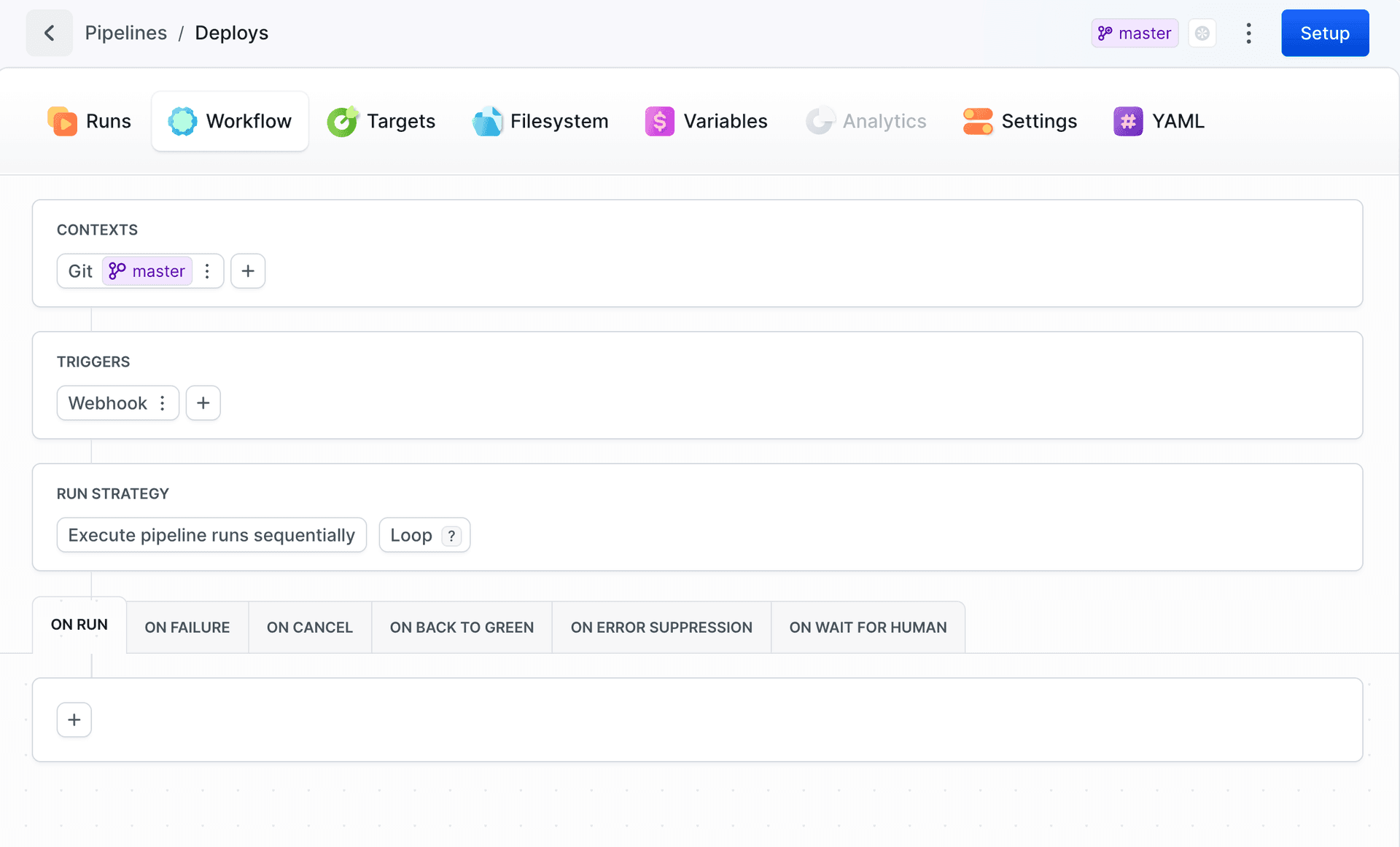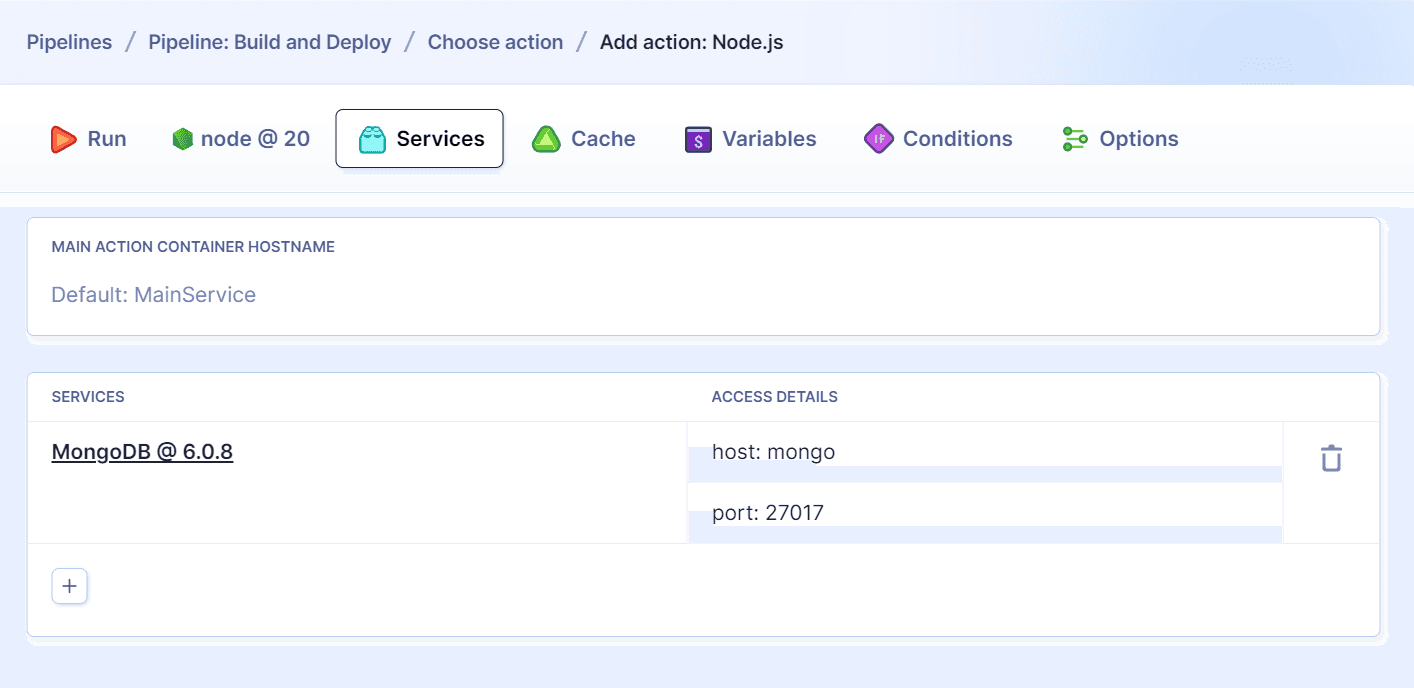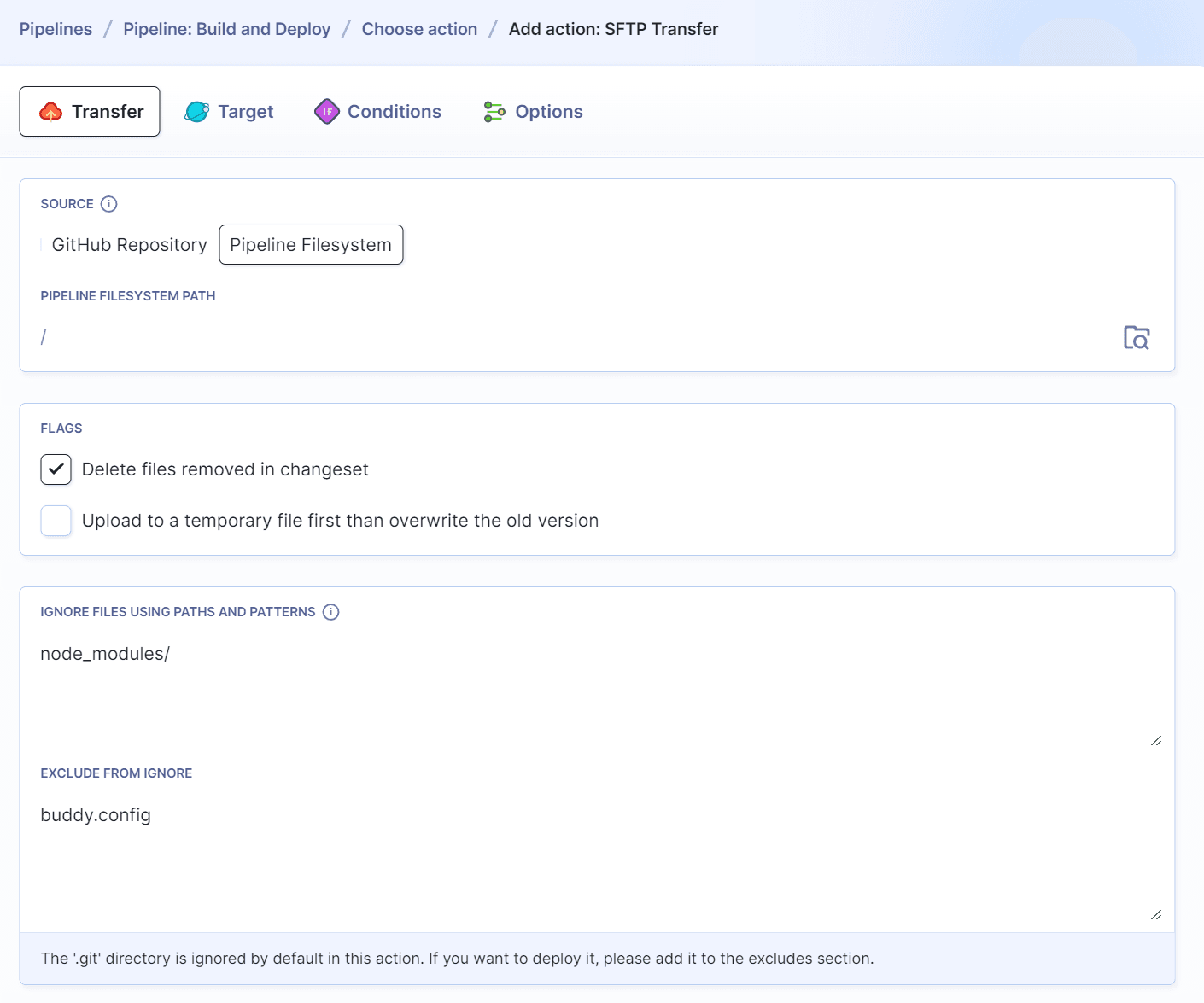CI/CD for Node.js
Node.js in an open-source environment that runs on the Javascript engine allowing you to invoke JavaScript code
How to setup CI/CD pipeline for Node.js
With Buddy, you can create a pipeline that builds, tests, and deploys Node applications on a push to Git. The configuration is super simple and setting up your CI/CD process takes 5 to 10 minutes.
Image loading...
However, before we get started, let's gather some basic knowledge on CI/CD key features:
Continuous Integration – assumes that every single change to source code is built and tested automatically, and then integrated into a remote repository, with the build status returned to the sender. Automated testing, including unit tests, is one of the main assumptions of Continuous Integration, allowing developers to check their code for possible bugs at the early stage of development process.
Continuous Deployment – means real-time deployment to staging or production environment (or web service), under condition that the tested code is valid and no longer requires bug fixes.
1. Create a new project
Go to Projects and click Create new project. Select your Git hosting provider (Buddy, GitHub, Bitbucket, GitLab, or Private Server) and enter your project name.
Image loading...
2. Add a new pipeline
Navigate to Pipelines and click New pipeline. In the form, configure the following:
- Name - Enter a descriptive name for your pipeline (e.g., "Deploy to production")
- ID - Optional identifier for the pipeline
- CPU - Select architecture: x64 or ARM64
- Resources per pipeline run - Choose resource allocation (default: Workspace default)
- Definition Location - Optionally check "Store configuration in a Git repository" to use YAML files
Click Add pipeline to create it.
Image loading...
3. Configure workflow: contexts and triggers
After creating the pipeline, go to the Workflow tab to configure:
Image loading...
Contexts - Click
+to add Git branch/tag context or Environment. See Contexts.Triggers - Click
+to add Git events, Schedule, or Webhook. See Workflow Configuration.
4. Add actions
Buddy lets you choose from dozens of predefined actions. In this example, we'll add 4 actions that perform the following tasks:
- Build and test Node.js app: download dependencies (npm, yarn, etc.), run automated tests, compile assets (npm tasks, webpack, etc.)
- Upload code to server together with compiled assets
- Restart application
- Send notification to Slack
4.1 Build your Node.js application
Look up and click Node.js on the action list to add it to the pipeline:
Image loading...
The Run tab lets you determine the commands to execute. The default commands are:
bashnpm install npm test$$
Image loading...
4.1.2 Node version
You can change the version of Node and install missing packages & tools in the runtime environment tab:
Image loading...

4.2 Deploy application to server
The compiled application needs to be uploaded to the server. Head to the Deploy & Remote OPS section and select your upload action (SFTP in our case):
Image loading...
When adding the action, you can choose what and where should be uploaded:
Image loading...
4.2.1 Node modules
node_modules to the ignore paths (Transfer tab) - we will install them on the server after the deployment in the next step.
Image loading...
4.3 Install modules & restart application
Once the app is deployed, you can run additional commands on your server with the SSH action:
Image loading...
In this case, we shall run npm install and restart the application with a script:
Image loading...
4.4 (Optional) Send notification to Slack
You can configure Buddy to send your team a message after the deployment. In this example we'll use Slack:
Image loading...

5. Summary
Congratulations! You have just automated your entire delivery process 🍾🙌. Make a push to the selected branch and watch Buddy fetch, build, and deploy your project to the production environment. With Continuous Delivery applied, you can now focus on what's really important: developing awesome apps! 🔥
Additional resources
- How to set up a Continuous Deployment pipeline with Buddy
Hint
📚 Learn more about Node.js action features, integrations and alternatives.
Last modified on Nov 20, 2025